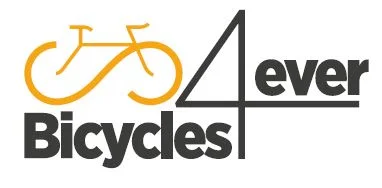Real-World Bike Fit Session for Maximum Comfort and Performance with Road Cycling Academy
Video Real-World Bike Fit Session for Maximum Comfort and Performance with Road Cycling Academy
Video Real-World Bike Fit Session for Maximum Comfort and Performance with Road Cycling Academy YouTube Channel.
Real-World Bike Fit Session for Maximum Comfort and Performance
A Comprehensive Guide to Symmetry-Based Bike Fitting
Introduction to Symmetry-based Bike Fitting
Understanding Glenda’s Symmetry-Based Issues
Cycling enthusiasts understand the importance of a proper bike fit, especially when it comes to addressing symmetry-based issues. In a YouTube video, Glender visits the Bike Fit Clinic seeking a solution to her right VMO insertion pain and power meter imbalance. Her case serves as an excellent example of the complexities involved in addressing asymmetry in road cycling. The process of identifying and resolving these issues is crucial for optimizing performance and preventing potential injuries.
Analyzing Glenda’s Off-Bike Position
The bike fitting process begins by analyzing Glenda’s off-bike position in detail. The focus is on identifying leg length discrepancies, asymmetries in muscle bulk, postural issues, and flexibility problems. These factors play a crucial role in formulating an understanding of the triggers for Glenda’s asymmetry-related problems. By assessing these factors, the bike fitting specialists can develop a strategic plan to address the asymmetry when Glenda is on the bike.
Identifying Asymmetry in Glenda’s Knee Angle
Glenda’s case presents a unique challenge due to the noticeable differences in her knee angles. A closer examination reveals a deviation in her right tibia, causing her right knee to flare out slightly differently than her left knee. This asymmetry could be attributed to issues such as miniscus wear and tear, genetic factors, or muscle imbalances. The deviation in her knee angle has implications for her cycling performance, leading to differential loads through her feet and different muscle bulk. The identification of this asymmetry is crucial in developing a tailored solution to address Glenda’s specific needs.
Addressing Foot Stability through Arch Support
The next step in the bike fitting process involves addressing foot stability issues through high-quality arch support. Upon analyzing Glenda’s feet, it becomes evident that her left foot operates with a slight outward turn, leading to differential loads and asymmetrical wear and tear. By implementing proper arch support, the aim is to stabilize Glenda’s dominant foot under heavy load and alleviate the asymmetry-related issues she is experiencing. This focus on foot stability is essential in achieving a more balanced and symmetrical cycling position.
The Impact of Arch Support on Symmetry
The addition of high-quality arch support leads to a remarkable improvement in Glenda’s symmetry and overall riding experience. The stability provided by the arch support plays a significant role in addressing her asymmetry-related problems. Not only does it enhance her foot stability, but it also leads to improved glute engagement, hamstring activation, and pelvic planarity. The impact of this intervention demonstrates the importance of addressing foot stability as a key factor in achieving symmetry in road cycling.
Fine-tuning Bike Fit for Optimal Symmetry
The bike fitting specialists proceed to fine-tune Glenda’s bike fit by making adjustments to her seat height, cleat position, and handlebar alignment. These meticulous adjustments aim to optimize her riding position and ensure maximum symmetry and functionality. The process involves precise measurements and incremental changes to achieve the ideal setup that promotes symmetrical muscle engagement and minimizes asymmetrical compensation strategies. The attention to detail in this stage of the bike fitting process highlights the commitment to achieving optimal symmetry for Glenda’s cycling performance.
Real-World Bike Fit Session for Maximum Comfort and Performance
In conclusion, Glenda’s journey through the bike fitting process serves as a valuable case study in addressing symmetry-based issues in road cycling. By identifying and resolving asymmetries in her body alignment, muscle engagement, and foot stability, the bike fitting specialists have been able to significantly improve her cycling experience. The implementation of high-quality arch support, meticulous adjustments to her bike fit, and a focus on achieving symmetry in muscle engagement have all contributed to resolving her asymmetry-related problems.
For individuals seeking to improve their road cycling experience, addressing symmetry-based issues through professional bike fitting is essential. By prioritizing proper alignment, muscle engagement, and foot stability, cyclists can optimize their performance and minimize the risk of injuries associated with asymmetries. The comprehensive approach to addressing these issues highlights the significance of symmetry in achieving peak athletic performance and long-term cycling enjoyment.
The opinions expressed in this space are the sole responsibility of the YouTube Channel Road Cycling Academy and do not necessarily represent the views of CicloNews.

